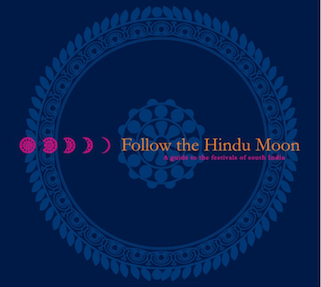|
The Indian Analyst
|
South Indian Inscriptions |
XII.- Inscriptions of Rajakesarivarman, MadiraiKonda Rajakesarivarman or Gandaraditya No. 113 to 115 Ghritasthanesvara, Dandisvara & Adhipurisvara temples No. 111 to 112 Adimulesvara temple at Tiruppalatturai No. 116 to 118 Dandisvara at Velachcheri, Vishnu temple at Tirumalpuram No. 113.â ON THE SOUTH WALL OF THE CENTRAL SHRINE IN THE GHRITASTHANESVARA TEMPLE AT TILLASTHANAM[1] This inscription is dated in the 13th year of Rajakesarivarman. It records gifts of gold made by Tennavan Pirudimarasan alias Katti Orriuran and Varaguna â Perumanar, the wife of Parantaka Ilangovelar, for two perpetual lamps to be burnt in the temple of Mahadeva (Siva) of Tiruneyttanam which was a devadana (village) in Poygai-nadu. Among the boundaries described in the inscription the embankment Karikala-karai is worthy of mention. Varaguna-Perumanar under the name Varaguna has been mentioned in the Muvarkoyil inscription at Kodumbalur[2] as the wife of Bhuti-Vikramakesariin whose other name was Madhurantaka-Irukkuvel. Perhaps Parantaka Ilangovelar of our inscription is the same as Madhurantaka Irukkuvel. Mr. Venkayya considered that Madhurantaka Irukkuvel was a contemporary of Aditya Karikala II.[3] The palaeography suggests a much earlier period for the inscription. (Line 1.) Hail ! Prosperity ! In the 13th year of (the reign of) king Rajakesarivarman, Tennavan Pirudimarsan alias Katti Orri-uran gave 25 kalanju[4] of gold for burning one perpetual lamp with (one) ulakku of ghee every day, to the (god) Mahadeva (Siva) of Tiruneyttanam which was a devadana in Poygai-nadu; and Varaguna-Perumanar, the queen (deviyar) of Parantaka-Ilangovelar, (also) gave 25 kalanju of gold for one perpetual lamp. With (this) total of 50 kalanju of gold (some) land of the god was cleared of its borders and mounds and converted into a wet field. The boundaries (of this reclaimed) land (are) : -
(L. 7.) West of the cultivated land (tudavai) of (the god) Vishnu-Bhattaraka (lying to the) east of the border ; north of the embankment (called) Karikala-karai ; east of the karay dry lands of the god ; and south of (the channel called) Andanur âvaykkal. Having (thus) received the ten sey of cultivated wet land situated within the four great boundaries thus described, we, the assembly and the padamulam[5] of Tiruneyttanam, agree to burn daily two perpetual lamps, as long as the moon and the sun (endure). (The assembly of) all Mahesvaras shall protect this (charity). No. 114.â ON THE SOUTH WALL OF THE CENTRAL SHRINE IN THE DANDISVARA TEMPLE AT VELACHCHERI[6] Madiraikonda Rajakesarivarman, in whose 5th year this record is dated, has been identified with Gandaraditya, the second son of Parantaka I., on the supposition that he must have inherited the title Madiraikonda from his father who first bore it and that he should have been the immediate successor of Parantaka I. on the Chola throne â the eldest son Rajaditya having evidently died during the life-time of Parantaka[7]. Hail ! Prosperity ! In the 5th year of (the reign of) king Rajakesarivarman who took Madirai (Madura), Devakumara-kramavittan of Tennur, (one) of the (members of the) administrative assembly (alum-ganattar) of Velichcheri in Kottur-nadu, (a subdivision) of Puliyur-kottam, gave ninety fat sheep, which neither die nor grow old, for burning a lamp as long as the moon and the sun (endure), (in the temple) of the god Tiruttandisvara of this village. (The assembly of) all Mahesvaras shall protect this charity. No. 115.â ON A PILLAR LYING TO THE SOUTH OF THE ADHIPURISVARA TEMPLE AT TIRUVORRIYUR[8] This inscription is also dated in the 5th year of the reign of Madiraikonda Rajakesarivarman. It registers a gift of sheep for a lamp to the Siva temple at Tiruvorriyur. The donor was one of the nobles (perundaram) of Udaiyar sri-Uttama-Chola who is undoubtedly king Madhurantaka Uttama-Chola, the paternal uncle of Rajaraja I. A reasonable doubt may arise why Uttama-Chola is given here the title of a ruling king and not that of a prince. It was perhaps because he was the chosen successor of Gandaraditya at the time. We know, however, that he actually came to the Chola throne only after one or two other kings had reigned subsequent to his fatherâs death. Hail ! Prosperity ! In the 5th year of (the reign of) king Raja kesarivarman, who took Madirai (Madura), Kaduttalai Nagamaiyan, son of Singamaiyan, a perundaram of Kalesi (village ?) who had accompanied Udaiyar sri-Uttama-Soladeva (to this temple), gave ninety fat sheep, which neither die nor grow old, for burning one perpetual lamp as long as the moon and the stars (endure), and one Ila lamp-(stand) to (the temple of) Mahadeya (Siva) of Tiruvorriyyur. This shall be under the protection of (the assembly of) all Mahesvaras. [1] No. 287 of 1911. [2] Madras Epigraphical Report for 1908, pp. 87 ff. [3] Ibid. [4] Kalanju is indicated by the symbol. [5] This term is now generally used as a polite term of respect for a high person, but seems to apply here to the priests of padamula, i.e., of God. [6] No. 315 of 1911. [7] Madras Epigraphical Report for 1912, Part II, page 64, paragraph 17; the Director-Generalâs Archaeological Survey Report for 1908 â 09, page 122. [8] No. 246 of 1912.
| ||||||||||||||||||||||||||||||||||||||||||||||||||||||||||||||||||||||||||||||||||||||||||||||||||||||||||||||||







